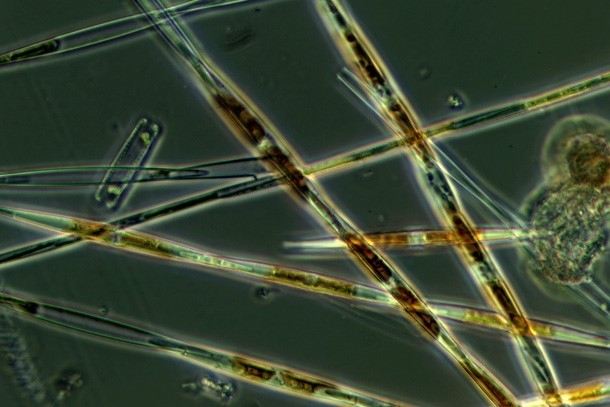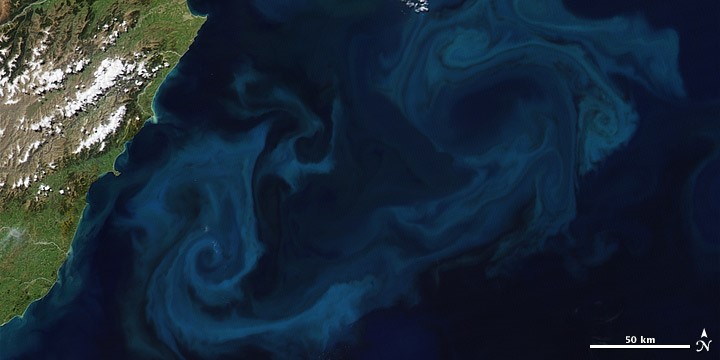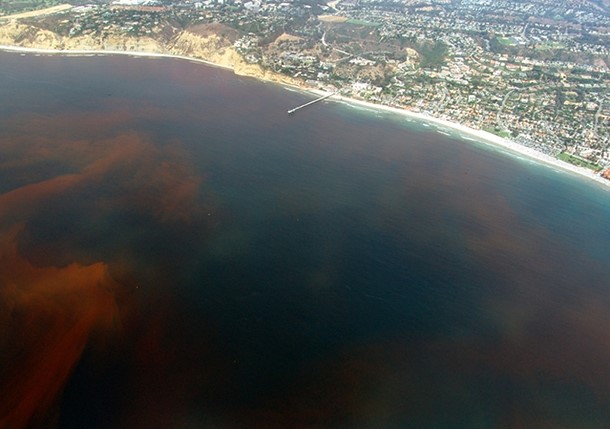Weather satellites do more than track the Earth’s skies; they also observe the oceans and keep us safe.
Quick question. Which is more dangerous? These giant killer whales …

Source: NOAA
Or, these itty-bitty plant cells?

Source: NOAA photo courtesy Vera Trainer
You probably guessed! Those tiny algal plant cells are part of the giant poisonous bloom that closed fisheries in the West Coast.
Mean Little Blooms
The little Pseudo-nitzchia plants produce a poisonous chemical, domoic acid. When enough of them grow, the shellfish, crabs, anchovies and sardines absorb the chemicals as well. Larger animals eat the smaller animals, get poisoned and die.
Last summer, at least 30 whales and a large number of sea lions were killed. If you had a nice meal of clams, mussels or crab this summer and didn’t get poisoned, it’s because you were saved by weather satellites.
Weather satellites help us observe huge blooms of plant life, hundreds of square miles of seaweed and algae that float in the ocean. The plants are the foundation for the ocean food chain and studying them gives important information for the fishing industry. Scientists monitor these blooms. They also issue warnings if the blooms turn deadly.

Weather satellites discovered huge algae blooms in the ocean and scientists can issue warnings if they are deadly. Source: NOAA
When Pacific waters are unusually warm, algae bloom stretches from California to the Gulf of Alaska. Last summer, NOAA scientists have studied the extreme bloom and found it was oozing toxic domoic acid. They warned different agencies and Washington, Oregon and California had to stop clam harvesting on polluted beaches and large portions of Washington’s Dungeness crab fishery. Working with universities and the Quileute and Makah Tribes, they continued to survey the ocean and steered the fishing industry toward healthy waters. There were some multi-million dollar losses from the giant bloom, but no humans were reported poisoned.

A deadly red tide off of La Jolla California. Source: NOAA
This wasn’t what the satellites were originally supposed to be doing, but nowadays weather satellites are not only showing whether it’s safe to have that cool autumn picnic, but also making sure the crab salad sandwich will be safe to eat!
Comments